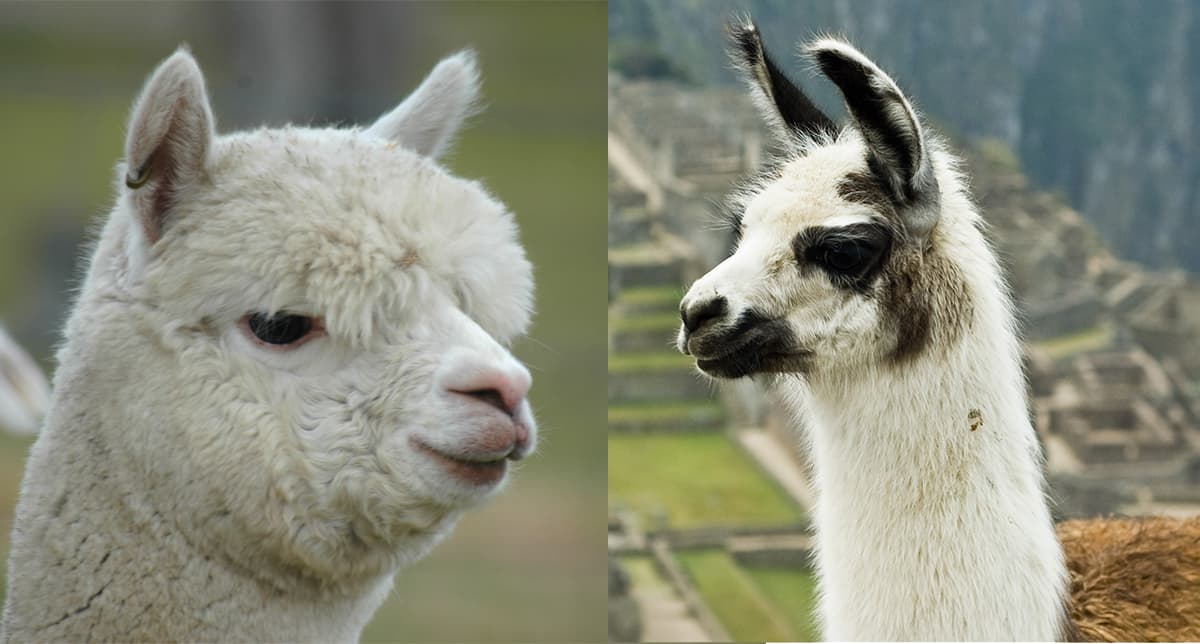So there you are walking down the street in Arequipa Peru and all of a sudden, someone spits! In your direction! Your first question is “llama or alpaca?” Given the likelihood of this happening, it’s good you read your primer because you could immediately identify it as a llama. Important information if you’re filling in a police report.
Actually there are a couple of other things that you could use as identifiers. The alpaca (on the left above) has a kind of smashed-in face in comparison to the elongated face of the llama (on the right). But the big giveaway are the longish banana-like ears on the llama. (The llama is also twice the size of an alpaca but if you don’t see the two of them together, how would you know?) The alpacas in Peru tend to look like sheep with long necks–until shearing season.
The softest wool in the world arguably comes from alpaca. Cashmere is not a sustainable harvest these days–the grasslands they need in China and Mongolia are over grazed. Alpaca is a great substitute. It’s lightweight and contains no lanolin, making it hypoallergenic. It’s much softer than sheep wool but doesn’t have the water repellent properties of wool because of its lack of lanolin.
There are a couple of things to be aware of in shopping for an alpaca sweater in Peru. First one is price. If it looks like you got an excellent deal in a market ($10 to 20 USD for example) there’s a good chance it’s synthetic. It’ll feel warm if you rub it. A baby alpaca sweater –cool to the touch– will cost you in the region of $100 USD
